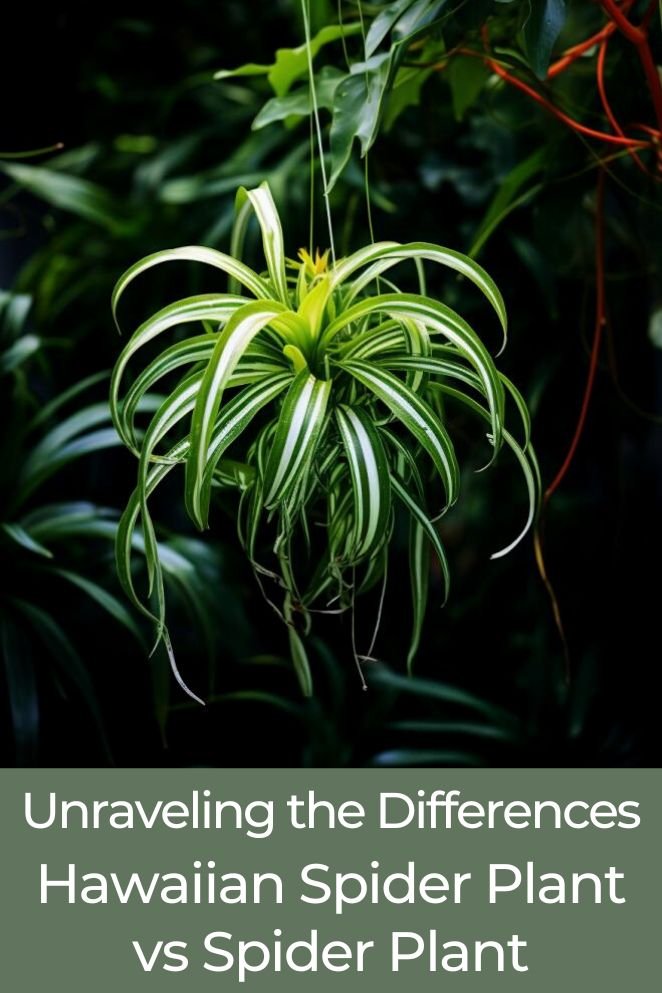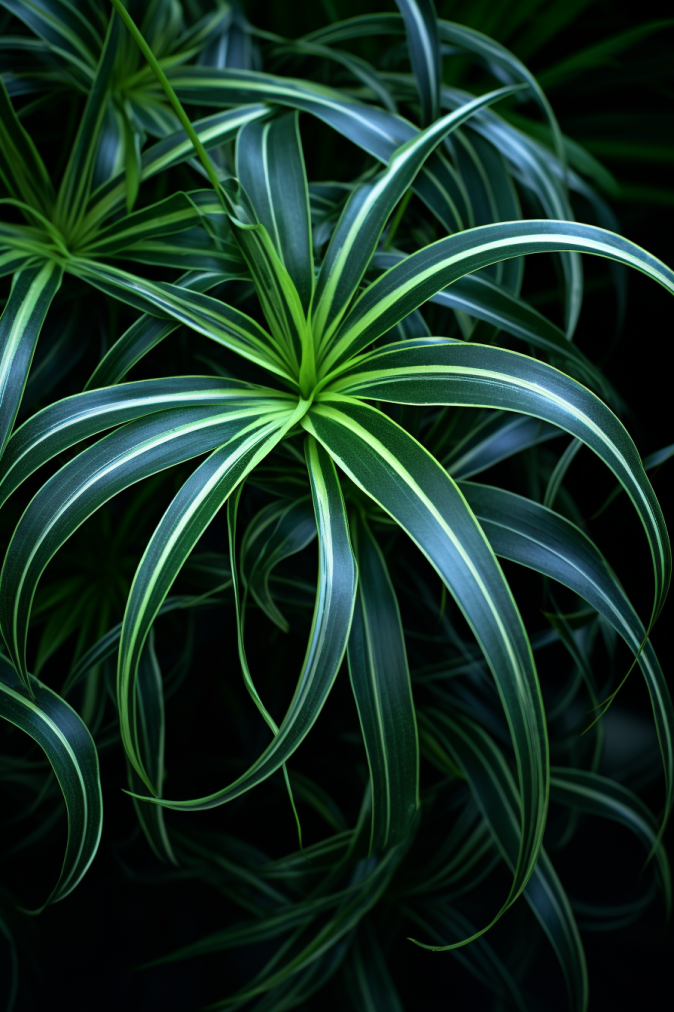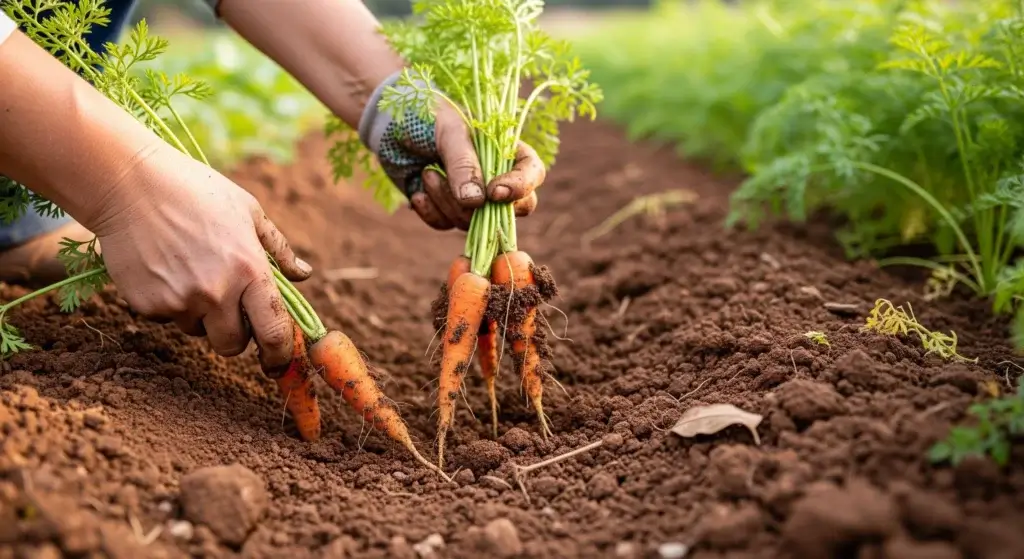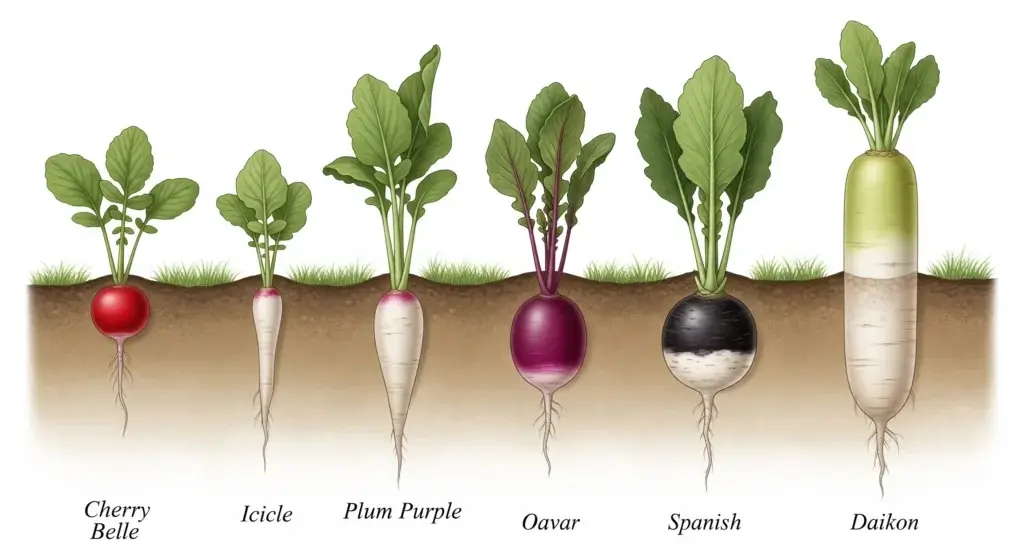
For plant lovers, spider plants have always been a hit because of their beautiful leaves and knack for cleaning the air.
But here’s a surprise: have you heard about the Hawaiian spider plant?
It’s a bit of a hidden gem with some distinctive traits.
Let’s take a closer look at how these two— the classic spider plant and its Hawaiian relative—compare and differ.
Spider plants are renowned for their lush foliage and their ability to freshen up indoor air.
However, there’s a lesser-known variation, the Hawaiian spider plant, that boasts unique features.
In this comprehensive comparison, we’ll explore the similarities and differences between the classic spider plant and its lesser-known Hawaiian counterpart.
About Spider Plant
The classic spider plant, scientifically referred to as Chlorophytum comosum, stands out as a hardy and versatile indoor plant that captivates plant enthusiasts for several reasons.
Let’s dive into the finer details that make this plant such a beloved household favorite:
- Read also: Tips for Hawaiian Spider Plant Care
- Read also: Thriving Spider Plant Care Indoors
Resilience and adaptability
One of the standout qualities of the classic spider plant is its ability to thrive in various indoor conditions.
Whether placed in bright, indirect light or in slightly shaded areas, this plant remains resilient, adapting well to its surroundings.
Distinctive arching leaves
The plant’s foliage steals the spotlight with its elegant arching leaves that often cascade over the sides of pots.
These long, slender leaves boast a vibrant shade of green, adding a refreshing touch to any indoor space.
Easy-care nature
Perfect for both beginners and experienced plant parents, the spider plant’s low-maintenance nature makes it a hassle-free addition to any home.
It’s forgiving demeanor means it can tolerate occasional neglect, bouncing back with grace after periods of irregular care.
Origins and south african heritage
Hailing from South Africa, this plant carries a heritage that spans various climates.
It’s ability to thrive in different environmental conditions contributes to its popularity worldwide.
With over 65 different species within their genus, they formed a diverse family adapted to various ecological niches.
Air-purifying abilities
Beyond its aesthetic appeal, the classic spider plant is renowned for its air-purifying qualities.
It helps cleanse indoor air by absorbing toxins like formaldehyde and carbon monoxide, promoting a healthier living environment.

The Hawaiian Spider Plant as a Variation
Spider plants, with their lush foliage and air-purifying qualities, have long been favorites among plant enthusiasts.
But did you know there’s a lesser-known variation, the Hawaiian spider plant, that stands out with its unique features?
In this detailed comparison, we’ll delve into the differences and similarities between the classic spider plant and its Hawaiian cousin.
The Hawaiian spider plant emerges as an intriguing variation within the Chlorophytum comosum family (Spider Plant), offering a fresh perspective on the beloved classic.
With its exclusive characteristics, this plant stands out, drawing the gaze of those eager for a distinctive addition to their indoor greenery.
What Makes Hawaiian Spider Plant and Spider Plant Similar?
Botanical classification
Both plants, known scientifically as Chlorophytum comosum, belong to the same species.
Their botanical classification ties them together as members of the same family, showcasing a common genetic heritage.
General appearance
Despite some unique variations, both plants exhibit similar basic structural features.
They typically showcase slender, arching leaves that can vary in coloration and variegation patterns.
This similarity in appearance forms the backbone of their recognizable aesthetic appeal.
Propagation methods
Both the Hawaiian spider plant and the classic spider plant reproduce via the generation of offsets or “spiderettes”.
This shared characteristic allows enthusiasts to propagate and expand their collections by utilizing these baby plants.
Care and Needs
Despite their differences, both share similar easygoing natures. They enjoy bright, indirect light, moderate watering, and well-draining soil.
Toxicity
Both are non-toxic and safe for pets and humans, making them family-friendly houseplant choices.

Distinguishing Features: Spider Plant vs. Hawaiian Spider Plant
Geographical origins
While classic spider plant originates from South Africa, Hawaiian spider plant hails from Hawaii, influenced by its tropical habitat, potentially impacting its growth patterns and specific leaf variegation.
Leaf variegation
While the classic spider plant boasts green and white stripes, the Hawaiian variety usually sports wider variegation with cream, white, and green.
Hawaiian spider plant leaves are wider and often have ruffled edges compared to the classic spider plant’s narrower, smoother leaves.
Flowers
While both can flower, the Hawaiian spider plant boasts larger, star-shaped purple flowers, while the regular spider plant has smaller, white flowers.
Caring for a Hawaiian Spider Plant
Caring for a Hawaiian spider plant involves several key considerations to ensure its health and vibrancy.
Light
Moderate indirect light: Place in bright, indirect sunlight. Avoid direct sun exposure, which can scorch the leaves, particularly during hot afternoons.
Watering
Consistent moisture: Keep the soil slightly moist but not soggy. Water when the top inch of soil feels dry. Ensure proper drainage to prevent waterlogging, which can lead to root rot.
Humidity
Moderate to high humidity: As a tropical plant, it thrives in moderately humid conditions.
Mist the leaves occasionally or place the pot on a humidity tray to create a conducive environment.
Temperature
Warm environment: Maintain temperatures between 65°F to 80°F (18°C to 27°C). Protect the plant from drafts or sudden temperature fluctuations.
Soil
Well-draining potting mix: Use a well-aerated, well-draining potting mix to prevent waterlogging and promote healthy root development.
Fertilization
Monthly feeding: During the growing season (spring to early fall), feed with a balanced liquid fertilizer diluted to half strength every 4 weeks.
Pruning and maintenance
Trimming dead leaves: Remove yellow or brown leaves promptly to encourage new growth and maintain the plant’s appearance.
Regular grooming: Remove “spiderettes” (baby plants) if needed to control the plant’s size or to propagate.
Propagation
Spiderette propagation: Hawaiian spider plants produce “spiderettes” that can be propagated by placing them in water or directly planting them in soil.
Repotting
Every 1-2 years: Repot the plant into a slightly larger pot to provide ample space for growth. Refresh the soil to replenish nutrients.

- Read also: Snake Plant Care Indoor for Thriving Bliss
- Read also: Why Is My Snake Plant Drooping
Conclusion
Ultimately, while both the classic spider plant and its Hawaiian counterpart share foundational traits, it’s the Hawaiian variation that brings a distinct charm to the mix.
With its roots in Hawaii and its exceptional leaf variegation, the Hawaiian spider plant brings a refreshing twist to the beloved household plant.
FAQs
Yes, Hawaiian spider plants generally thrive in similar conditions to classic spider plants. However, slight adjustments might be needed to accommodate their unique characteristics.
Not necessarily. While they may have specific care nuances, with proper attention to their needs, Hawaiian spider plants can be as manageable as their classic counterparts.



